IMPROVE MY GAME
Articles
Developing Young Golfers: They'll Need To Be FAST
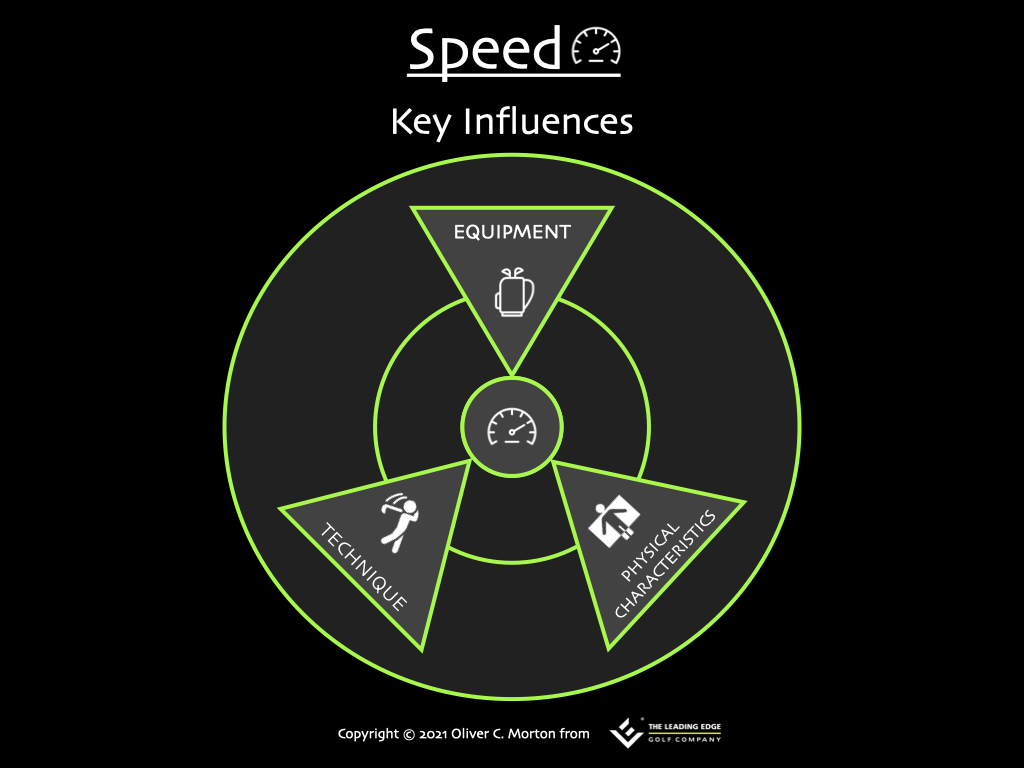
It’s fantastic the authorities have opened and sponsored golf's distance debate. It’s engaging golfers and non-golfers alike and getting people to think about the state and overall direction of the game.
Everyone will have an opinion. Advocates of regulating distance are keen to ensure the heritage of our great game remains intact; and rightly so, it’s one of the many things that makes our sport unique. Nobody wants to see beautiful courses of old become obsolete or new courses become excessively long or penal (think US Open setup).
Equally, manufacturers, players and coaches don’t want their creativity, innovation, ingenuity and diligence to go unrewarded. When all is said and done we're all in this together - to make golf BETTER!
With the outcome still very much up in the air at the time of writing, no matter which side you’re on, one thing that’s clear is that Speed has become essential to success at the highest levels.
So, if a Junior wants to venture into the professional realms, they’ll need to be FAST if they want to compete (and earn a living). I say this as the evidence is piling up:
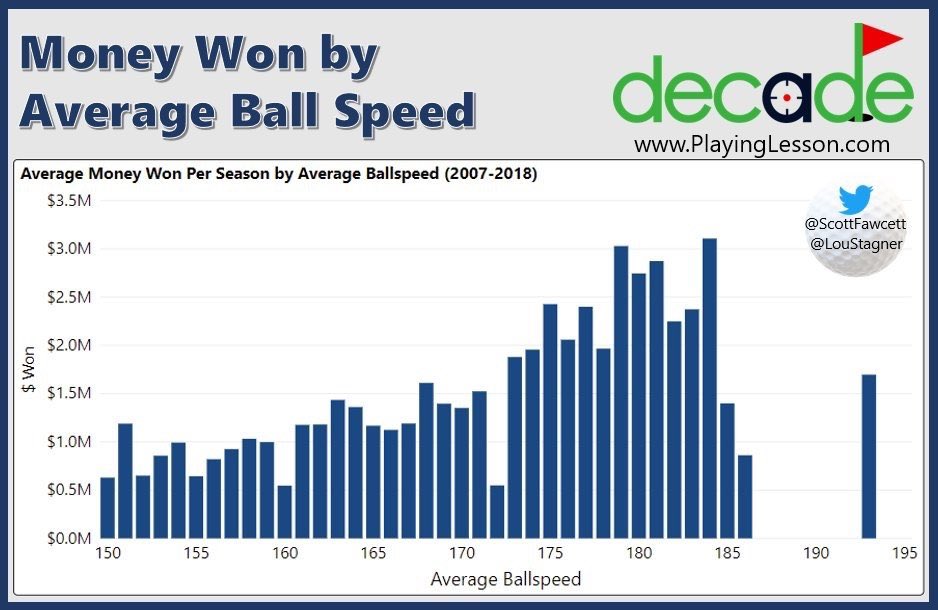
(Graphic from Lou Stagner and Scott Fawcett)
It’s even becoming prerequisite at the Collegiate level. Here’s Colorado’s 2019/20 Men’s Team Ball Speed Leaderboard. Nine of their 10 players are at or above the PGA TOUR average of 113 mph.

So HOW do you help Juniors to be fast?
That’s down to the optimisation of three basic components:
- Physical
- Technical
- Equipment
1. Physical
The Science
Speed (aka Power) is the combination of speed and force (Power = Force x Velocity). Force is generated by the muscles. Therefore, the two key components to power from a physical standpoint are:
- Build muscular strength (Hypertrophy)
- Recruit more motor units
Until Juniors reach peak growth height velocity (PHV), the dominant way they generate Power is by efficient Motor Neuron Recruitment. The more motor units they activate, the more muscle fibres will engage and the more force can be generated. The activation of more motor neurones will result in more muscle fibres being activated, and therefore a stronger muscle contraction.
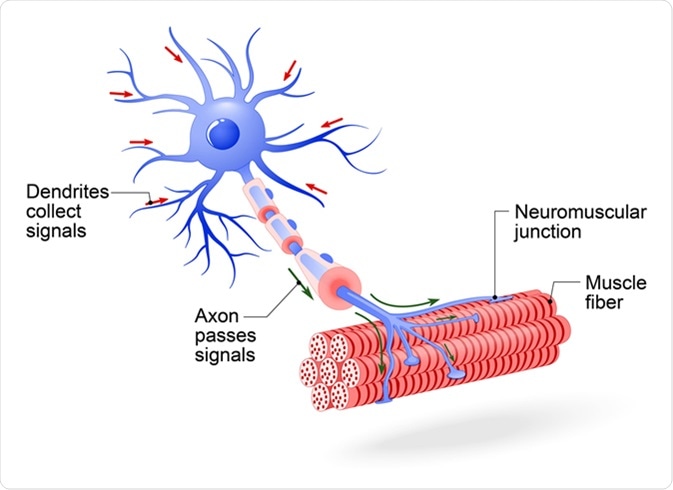
Strengthening the muscles (Hypertrophy) is something to be introduced later in their development. But when?
TPI’s Junior Development Model
When we delve deeper into when Juniors should be training Speed let’s take a look at TPI’s Junior Development Model (this is something that is outlined in TPI's advanced Junior courses).
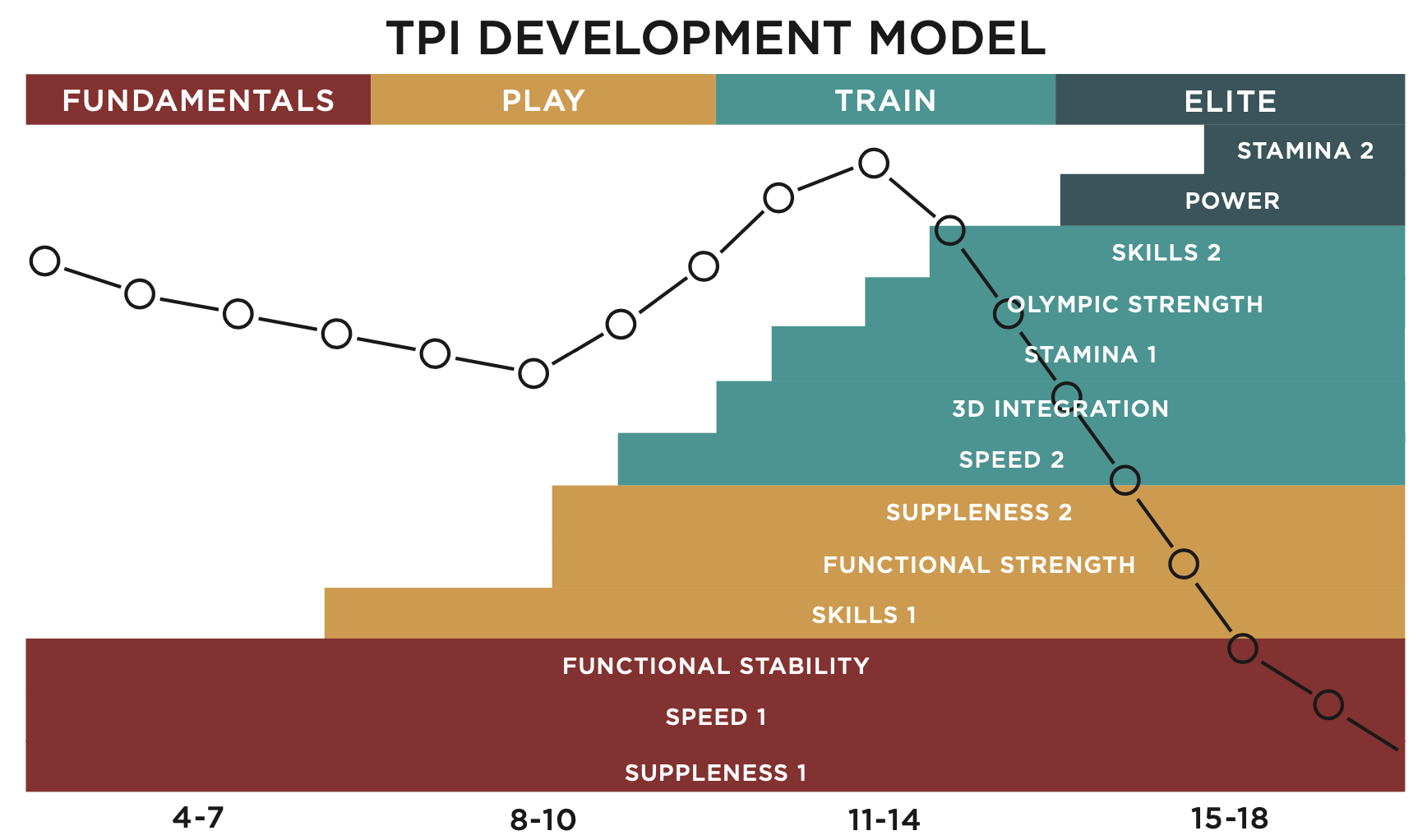
As you can see it highlights specific windows for certain physical attributes. All the windows are important, but when speed is our focus we need to pay attention to the two Speed windows (Speed 1 and Speed 2), the maximum strength window (Olympic Strength) and the power window (Power).
If a child “hit’s” all 4 training windows (i.e partakes in the appropriate trading techniques specific to each window) they will be wired for Power. If they hit none of them, well…
A way to think of this is Fuel Type: i.e a player can use one of four fuel types to play golf with;
- Rocket fuel
- Jet fuel
- Gasoline (Petrol)
- Diesel
If a child hits all four windows they’ll utilise rocket fuel. If they missed the first speed window, but hit the other three, its jet fuel. If they missed the first two speed windows, but hit the strength and power window, they use gasoline. If they missed all four windows, it’s diesel. With our blank canvas Juniors, we want to ensure they use rocket fuel.
Application
When it comes to how to apply this, there are two options:
1. Implicitly: Avoid early specialisation - Encourage Juniors to participate in Sports like Tennis, Badminton, Hockey and Football/Soccer, they are fantastic at training young golfers to be coordinated and fast. They each train the 4 main power sources in the Golf Swing:
- Vertical Thrust/Jump
- Rotary Power
- Arm Chop
- Wrist Release
2. Explicitly: Have juniors participate in a specialised training program with an appropriately qualified Professional Trainer - ensure they’re TPI Junior Certified.
The combination of both options is ideal but no matter the route they choose the fact is, more is more when it comes to the physical development of Juniors. The more sports a child plays, the more rounded an athlete they’ll be.
2. Technique
As mentioned, there’s 4 Sources of Speed/Power in the Golf Swing:
- Vertical Thrust Power
- Rotary Power
- Arm-Chop
- Wrist Release
The main power source for Juniors is is vertical thrust (jumping), as the others are underdeveloped. Fortunately, particular swing techniques can be used to help Juniors develop and increase their speed.
Couple the following techniques with intensity & intent (TRY to swing fast). Don’t focus on accuracy when doing them, the intention is to maximise club head speed. Also, only try one or two of them, once or twice a week. We don’t want any injuries:
Setup
- High Tee & Ball Forward (encourages upward attack angle)
- Wide Stance (stable base, ensure not too wide as it reduces mobility).
- Front foot flared out 20°-30°.
- Address ball in the heel of club - encourages negative thrust i.e. centre of pelvis moves away from the ball during downswing and impact.
Lower Body
- Forward/Lead Heel Raise during backswing
- Vertical Load & Jump: load the trail side during the backswing then shift balance laterally during the downswing to mid lead foot, rotate, lift/extend pelvis up and away from ball though impact and into follow through
- Knee flex: both lead and trail knees don’t need to be extended/straight, allow knee flex during both back and downswing
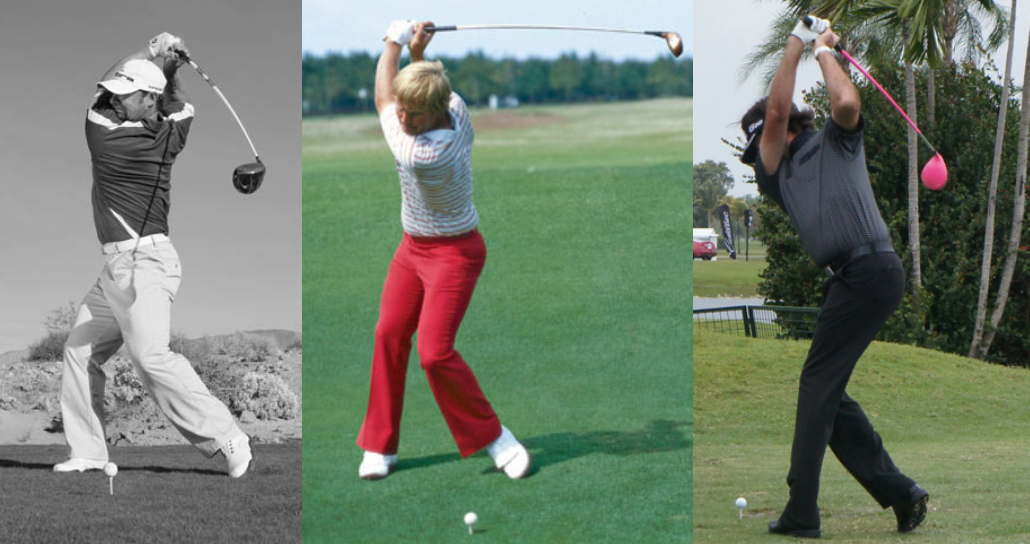
Upper Body
- Maximise/Optimise Torso rotation
- Arms High, Elbows Soft at top of the Backswing
- Encourage Clubface rotation (Axial velocity/closure rate)
Here’s a video of me giving them a go:
Side notes:
- Style of Practice: excessive ball hitting (low intensity, high volume) is the opposite of what we want for speed development (high intensity, low volume). It’s also unrepresentative of the game. I highly recommend “gamifying” practice: making it task vs time orientated. Take a look at the Junior Playbook I co-authored with Pia Nilsson & Lynn Marriott from VISION54.
- Encourage juniors to hit balls using their opposite side i.e left handed if they are right handed (Tiger did this as a child). It encourages deceleration/stability which is a foundational component of speed - you can only accelerate what you can decelerate.
3. Equipment
The goal of equipment optimisation (aka “Fitting”) is the same for Juniors as it is for Adults: maximise distance without excessively negatively influencing dispersion (e.g. without it costing you a Green In Regulation).
The most common misconception I hear is that lighter is better for Juniors. Whilst that might be true for most but just like with adults, we can’t solve a complex issue but looking through a single lens. There’s many factors to consider:
Shaft Length: Longer isn’t always faster & wider and shorter isn’t always slower & straighter. Juniors should test different length shafts to establish what is right for them.
Shaft Weight: Lighter isn’t always better! A heavier shaft can facilitate more efficient deceleration patterns resulting in better energy transfer due to improved segmental stability e.g. faster pelvis deceleration, helping the energy transfer into the torso more effectively resulting in more clubhead speed.
Head Design: Establish the best head design by relating to their Strike Location consistency and Launch requirements:
Head Design - Strike Point: One of the major differences between great and not so great players is their ability to consistently strike the ball out of the middle of the clubface. This minimises the potentially negative influences of horizontal Gear Effect and maximises distance when coupled with optimal launch conditions (Launch Angle and Spin Rate matching the Clubhead speed).
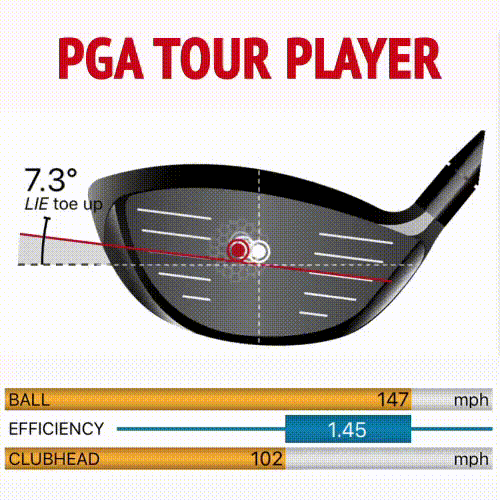

Head Design - Centre Of Gravity: To make clubs more forgiving manufactures design clubs with the capacity to move the club head’s centre of gravity back from the clubface.
However, the trade off is it encourages more shaft deflection (the bending of the shaft in the forward/backward direction to and away from the target) due to the centre of gravity of the head trying to match up with the centre of gravity of the shaft. This can add dynamic loft (and potentially spin), meaning the player could miss their optimal launch window = suboptimal distance.

The picture below shows two golfers that are creating an almost identical Dynamic Loft, but as you can see, the Blue Golfer is compensating for the excessive shaft deflection by “leaning” the butt of the club forward/towards the target. Technical compensations like this, due to ill fitting equipment, is something we want avoid for all golfers - especially Juniors!
.png)
Shaft Flex: The flex of a golf shaft is a key contributor to shaft deflection; softer shafts have more potential for deflection, increasing dynamic loft/launch angle and stiffer shafts have less, decreasing dynamic loft/launch angle.
A common misconception is that club head speed is the main determinant of shaft flex. From experience it's more to do with matching shaft flex with a players release pattern (when they maximise grip speed during the downswing) and transition tempo (rate of acceleration during transition i.e. going from backswing to downswing).
There’s no exact rules here but an “Early Loader” of the grip (maximum grip speed before or around shaft vertical during their downswing) and fast transition tempos generally need stiffer flexes. “Late Loaders” (maximum grip speed before or around shaft horizontal during their downswing) and slower transition tempos need softer flexes.
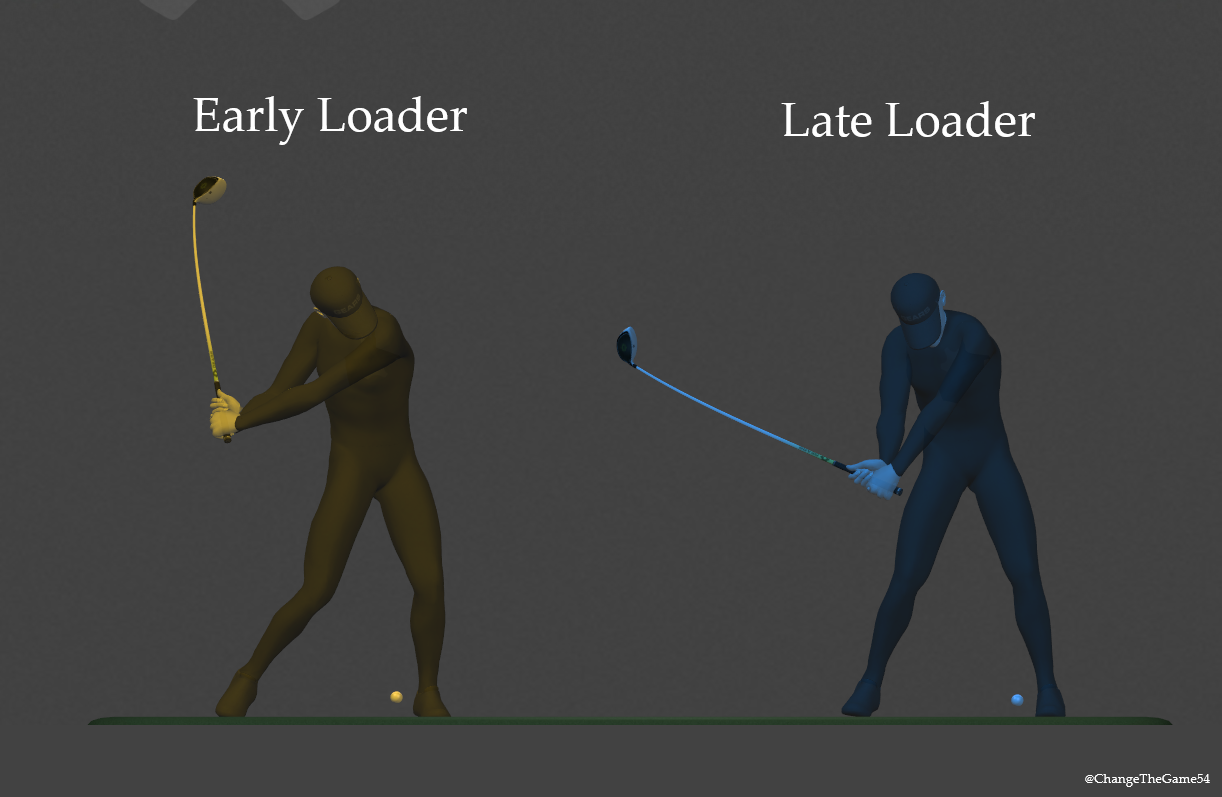
Closing Thoughts
- The number 1 reason why Juniors should participate in golf is that it’s Fun. If it’s not fun they won’t want to participate and they certainly won’t be willing to put the time and effort required to be successful in the Professional realms.
- Encourage children to participate in activities that develop their physical literacy. Being too intense too early can negatively influence development (e.g. too much early competition = limits time for training/other sports) risking mental, physical and emotional burnout.
- Encourage children to engage in specialised training protocols/programmes. It allows them to lay the bedrock of strength and coordination so they can engage in Speed training (Complex & Contrast) more effectively down the line (in College etc).
- Coach them to be fast first. Accuracy through technical refinement is much easier to develop down the line than speed.
- Ensure they have got the best possible equipment in their hands to maximise distance and make the game easier.
- Golf will always be a game of skill, and success can never be contributed to a single aspect of Performance, but as guardians, shouldn’t we be doing everything in our power to set them up for success?
- For more information on the concepts shared in this article, check out TPI's Power 2 online course.
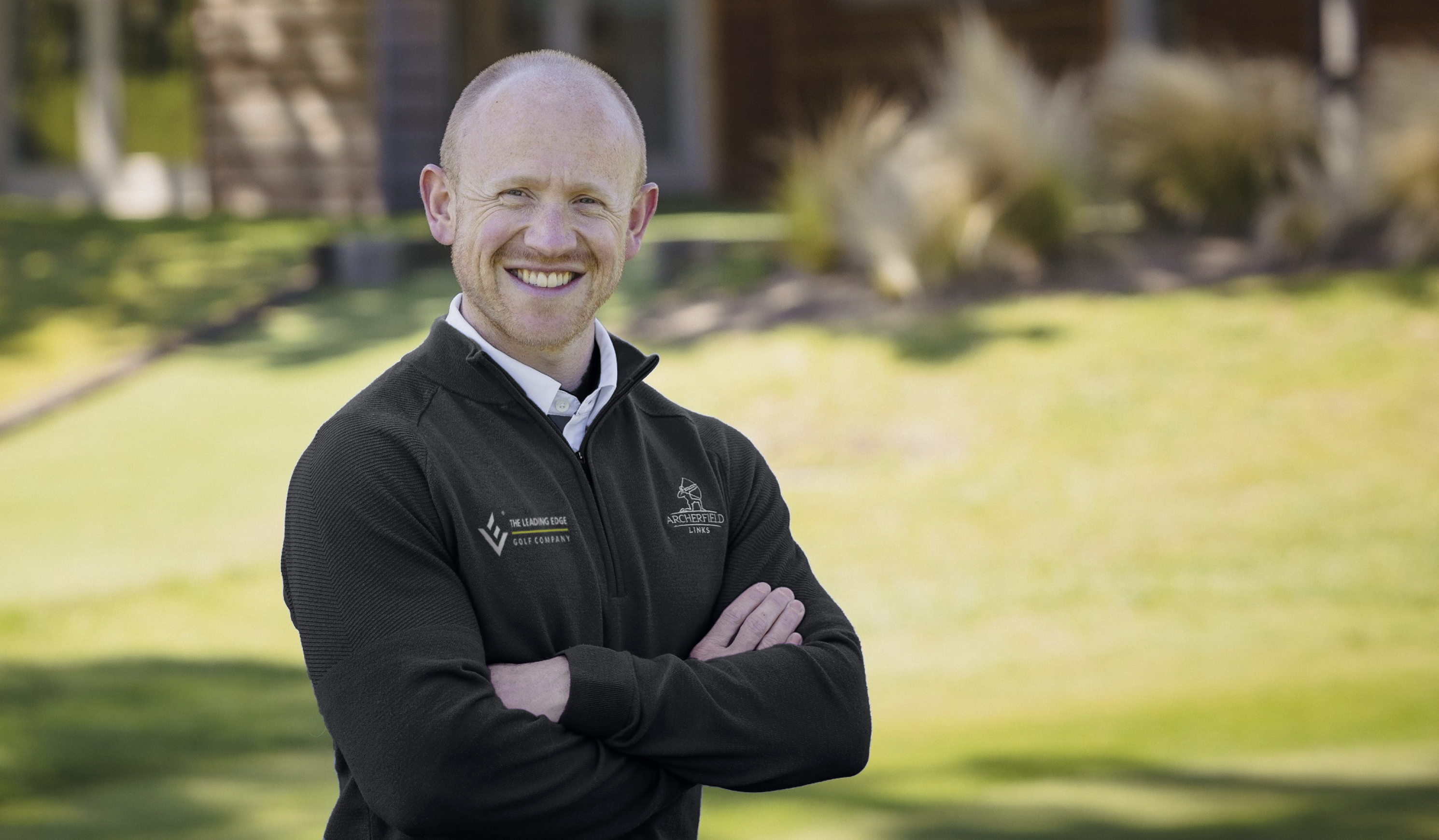
Oliver Morton is based at The Archerfield Performance Centre and is the Founder of The Leading Edge Golf Company. He specialises in Junior and Holistic Golf Coaching. His expertise covers the entire spectrum of development, working with Juniors as young as 5 to Major Champions and Ryder Cup Players. He's also enjoyed a healthy Speaking Career. Sharing his knowledge on platforms such as the UK Golf Trade Show and The PGA National Training Academy at The Belfry. Follow him Socially for more great content and/or to arrange Coaching/Speaking Sessions:
Twitter: @ChangeTheGame54
Instagram: @ChangeTheGame54
Facebook: The Leading Edge Golf Company
YouTube: The Leading Edge Golf Company
Vimeo: Oliver C. Morton